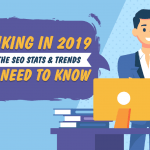 Using LinkedIn to Market your Business – Without Becoming a Spammer – Guest Post by ZipBooks
Using LinkedIn to Market your Business – Without Becoming a Spammer – Guest Post by ZipBooks
We are having another awesome guest blog post on our blog this week by the folks at ZipBooks. In this article they share some very valuable how-to skills on using LikedIn to market your business.
LinkedIn has an enormous reach of over 500 million registered users—an obvious target for social media marketers. Unfortunately, the platform sometimes suffers from questionable tactics by pushy sales types. Don’t be that guy.
With anything, the best formula for long term success is to keep your strategies above board. If you use LinkedIn the way it was meant to be used—as a business network—you can still be successful in getting your message out there.
Here are some ways to work smarter, stay within the lines and maximize the impact you can have on LinkedIn:
1. Start with a professional personal profile
For your authentic strategy to work, start with your own profile page. You should have a professional headshot, informative summary and links to relevant media. Anyone who receives contact from you or interacts with your material through LinkedIn should be able to click on your face and be impressed.
Also, be sure to include links to your company page within your personal profile so that others can see a direct connection to the work you’re doing.
2. Optimize your business page
If you haven’t done so already, make sure your business has a current company page and update it regularly. Share engaging content that is relevant to your target audience. Include links to your landing pages, social medias and relevant groups. Your business profile page should also be optimized for search, as it may be one of the first results to pop up when someone Googles your company.
Cultivate a following for your business page. Start by inviting employees to follow and link to your business. This way prospective clients won’t just see a billing software company, they will see the friendly faces who represent what you do.
Once you’ve got your friendly employee followers, reach out to customers and key partners for page follows. Promote your company page in emails, newsletters and blog posts and share a “follow” button on your website. Encourage employees to share this kind of content as well (some companies even incentivize this kind of internal marketing).
3. Share content in your feed
LinkedIn is a great place to expand your content marketing strategy. Hopefully, you are already developing regular blog posts and other kinds of valuable content on your website—all you have to do now is share that content with your LinkedIn audience as well.
Remember who your target audience is and focus on addressing pain points and offering solutions to make their job easier. Regularly share high-quality content that is in-depth, educational, insightful and practical. And don’t only share your own stuff, link to other posts that are relevant to your niche.
Sharing through LinkedIn includes the possibility to “go viral” (at least among LinkedIn users). If you post directly on LinkedIn and your post gets some attention, LinkedIn may choose to spotlight your content in one of their categories, drastically increasing the number of viewers.
It’s also a good practice to share job postings that come up within your company as this is considered highly relevant to the majority of LinkedIn users. Whatever you share, try to maintain a regular presence in your industry feeds.
4. LinkedIn Groups
As you are expanding your network, join groups that are specific to your industry or target customers. Don’t jump in with a sales pitch, but monitor conversations, look for questions to answer, and share interesting posts (not just your own). Engage in discussions with professionals to see what others in your industry are doing and what kinds of solutions your potential clients are looking for.
If there isn’t a good group in your niche, consider creating your own. This does take some time, but there are benefits to being the one in charge. You can choose to make your group public or private, send personal invitations, and monitor content.
As a reminder, though, you are trying not to be spammy. So don’t use your group as an avenue for direct marketing. Instead, aim to be genuinely helpful and build your reputation—you will see sales blossom. When you have a strong brand, people come to you.
Engaging in groups will help you fast-track your reputation as an expert in your industry and as someone genuinely interested in client success.
5. Sponsored Content and Text Ads
Like other social media platforms, LinkedIn offers sponsored content and text ads. If you choose to sponsor your posts, only promote your best content as it will be included in user’s feeds alongside organic content. Use rich media and video links to enhance your posts and draw in your reader.
“Matched audiences” is another cool feature that LinkedIn uses for marketing businesses. This feature monitors your website traffic and retargets specific audiences based on site visits. You can choose to target only professionals, those people who are more likely to buy your product.
Finally, you can use LinkedIn’s Analytics with your company page and your ad campaigns in order to track whether or not your content is working for you. Use the data you receive to create the most relevant and compelling content and choose which posts to promote.
6. Targeted InMail
LinkedIn is still the best social media platform for B2B sales and InMail is a great way to make the slightly-more-personal cold approach. You’ll be more effective if you take the time to add the person to your LinkedIn Network before trying to make the sale, but the ice cold approach can work for a small percentage. In fact, InMail in general has a three times higher response rate than traditional email.
Anyone who is on LinkedIn considers themselves a professional so they are in the market for better solutions and information. They will likely be more receptive than a cold approach on another platform, like Facebook.
A few tips if you decide to purchase InMail as a marketing strategy:
• Filter potential InMail recipients based on locations, connections or current companies
• Keep your contact brief, less than 100 words if possible
• Try to find common ground (a group, education background, etc.)–if there isn’t any, maybe wait to contact them
• Don’t include a sales pitch, start a discussion instead
• Invite prospective clients to free events, webinars and other promotions
7. Connect
LinkedIn is based around making connections, but it functions best when you are building relationships. Prove to your network that you can consistently offer relevant and practical content, not just thinly-veiled sales pitches. The kind of networking that happens on LinkedIn is a lot cheaper than attending a trade conference or even a lunch meeting.
If you can be current and genuine with your interactions on LinkedIn, you will market your business just by having a good reputation.
 Author
Author
Jaren Nichols
Author profile
Jaren Nichols is Chief Operating Officer at ZipBooks, online accounting software for small businesses. Jaren was previously a Product Manager at Google and holds an MBA from Harvard Business School.



